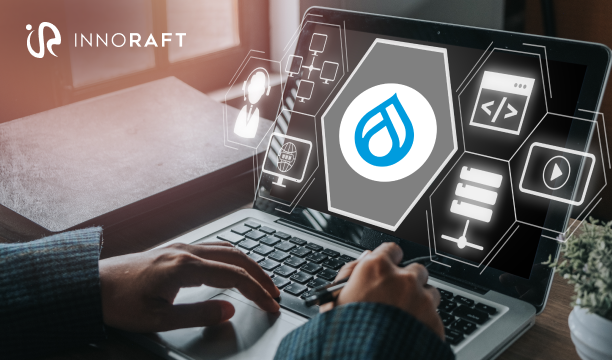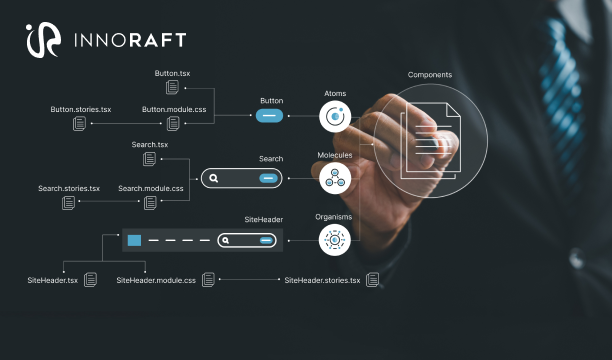Are you thinking about how to upgrade to Drupal 10 without feeling overwhelmed by the process? You’re not alone. Moving to a new platform version can feel like a significant undertaking—but if you’re still running your site on Drupal 7, Drupal 8, or Drupal 9, it’s time to act. All three versions have reached end-of-life, meaning no further security updates, performance enhancements, or official support will be provided.
Upgrading to Drupal 10 isn’t just about staying current. It opens the door to modern design tools, cleaner codebases, improved performance, and long-term peace of mind. And the good news? With each version, Drupal migration has become more intuitive and streamlined. Still, migrating a whole site—with all its assets, configurations, and content—is no small task. It’s a process that demands careful planning to avoid costly roadblocks or downtime.
That’s why we’ve put together this practical Drupal 10 migration checklist. It’s designed to guide you through each phase of the process—from planning to execution—so you can transition to Drupal 10 with confidence, speed, and minimal disruption.
Let’s dive in.
The Essential Checklist for Drupal 10 Migration
Migrating an entire website can feel like a major undertaking—but it doesn’t have to be. The key is preparation. A successful upgrade to Drupal 10 depends on how well you plan, execute the migration itself, and manage your site afterward.
To make the process more manageable, we’ve broken it down into six clear phases: Pre-migration, Setting up the Drupal 10 environment, Executing the migration, Post-migration tasks and testing, Go live checklist, and Post-launch monitoring and maintenance. This Drupal migration guide will guide you through each phase so you can ensure a smooth transition—and continue delivering a seamless user experience once your site is live on Drupal 10.
Let’s explore what each phase involves.
Phase 1: Pre-Migration Planning and Preparation
Every successful migration starts long before you touch a single line of code. If you want a smooth and efficient upgrade to Drupal 10, it’s crucial to understand where your website stands today and where it needs to go. That means taking stock of your current setup, identifying what’s essential, and ensuring your infrastructure is ready to support the move.
Here’s your pre-migration checklist for Drupal 10 upgrade:
Site Audit and Assessment
Begin with a thorough audit of your existing Drupal site. Identify all content types, taxonomies, users, media assets, and custom features. Highlight which elements are mission-critical, which are outdated, and what can be retired during the migration.
Define Migration Scope and Drupal 10 Upgrade Strategy
Are you rebuilding your site from the ground up in Drupal 10? Going for a direct lift-and-shift? Or maybe a hybrid approach? Use the insights from your audit to define your strategy—taking into account business goals, timelines, and stakeholder expectations.
System and Environment Compatibility Checks
Whether you are undertaking Drupal 7 to Drupal 10 migration, or from Drupal 9 or 8, make sure your hosting environment meets Drupal 10’s technical requirements—such as PHP 8.1+, MySQL 5.7+, or MariaDB 10.3+, and the appropriate server configurations. Compatibility now means fewer headaches later.
Module and Theme Review
Evaluate all contributed and custom modules for Drupal 10 compatibility as part of your Drupal 10 migration planning. Identify deprecated modules and plan replacements or upgrades. If you’re using a custom or community-contributed theme, assess whether it needs to be rebuilt using modern base themes like Claro or Olivero.
Custom Code Evaluation
Audit your custom codebase to identify deprecated functions and outdated practices. Start updating your custom modules to ensure they’re Drupal 10-ready, and develop a remediation plan where necessary.
Backup Strategy and Rollback Plan
Before this major upgrade to Drupal 10, you need a safety net. Set up a full backup process for your site’s database and files, and establish a rollback plan to recover quickly if anything goes off course during migration.
Team and Resource Allocation
Assign clear roles across your team. Everyone should know what’s expected of them, when to act, and how they’ll contribute to the overall Drupal migration process.
Laying this groundwork with Drupal 10 site audit sets you up for a smoother transition in the next phase. Ready to move forward? Let’s talk about the actual migration.
Phase 2: Setting Up the Drupal 10 Environment
Now that your Drupal 10 migration planning is complete, it’s time to bring your new Drupal environment to life. This phase is all about setting the stage for a smooth and controlled migration process. By creating a clean, well-configured environment, you reduce risk and give yourself the flexibility to test and troubleshoot effectively.
Here’s what to focus on in this phase 2 of Drupal migration guide:
New Drupal 10 Installation
Start with a fresh installation of Drupal 10. This clean slate provides the foundation for your new site’s configuration and ensures you’re not carrying over outdated or unnecessary components.
Staging or Development Environment
Set up a dedicated staging or development environment for the upgrade to Drupal 10 that closely mirrors your production setup. This sandbox lets you safely test your Drupal migration without disrupting the live site—giving your team the space to identify and fix issues early.
Install Migration Tools
To streamline your content migration, install the core Migrate module along with Migrate Plus and Migrate Tools. These tools are essential for managing structured data transfers, mapping content types, and ensuring a consistent migration workflow.
With your Drupal 10 environment properly configured, you’re ready to move into the heart of this Drupal 10 migration checklist: bringing your content, structure, and functionality into the new platform. Let’s walk through that next.
Phase 3: Executing the Drupal 10 Migration
This is where the real action happens. With your Drupal 10 migration planning completed and environment in place, it’s time to execute the migration—carefully, deliberately, and with frequent testing. Whether you’re upgrading from Drupal 7, 8, or 9, this phase involves moving data, replicating functionality, and ensuring your new site is production-ready.
Here’s how to approach it:
Core Drupal Update
If you’re currently on Drupal 9.4 or later, you’re in luck—you can perform a direct upgrade to Drupal 10. Check all dependencies for compatibility and use Composer to manage the update safely and efficiently.
Configure the Migration Process.
If you’re going for Drupal 7 to Drupal 10 migration, you’ll need to configure the Migrate API with custom scripts tailored to your site’s structure. If you’re migrating from Drupal 8 or 9, take advantage of upgrade paths, configuration export/import tools, and built-in content migration capabilities.
Content and Data Migration
Migrate all key content entities, including users, content types, fields, taxonomy terms, files, and media. Pay close attention to field mapping and potential character encoding issues—these are common sources of errors during Drupal 10 migration.
Module and Functionality Migration
Rebuild or replace any custom functionality using modern contributed modules where possible. It is one of the Drupal migration best practices to only rewrite custom code if necessary, since many legacy features now have better, community-supported alternatives that are Drupal 10-compatible.
Theme Migration or Rebuild
If your current theme was built for Drupal 7 or Drupal 8, it likely won’t be compatible. Use this opportunity to refresh your design—consider switching to the modern Olivero theme or developing a new custom theme using Twig and Drupal 10’s design best practices.
Custom Code Porting
Port your custom modules and functionality to match Drupal 10 standards. Remove deprecated code, update to the latest APIs, and use tools like Upgrade Status to streamline the process to upgrade to Drupal 10 and catch issues early.
The work in this phase may be heavy, but with a structured approach, the path to a fully upgraded, future-ready Drupal 10 site becomes much more manageable. Now, let’s make sure your hard work holds strong after launch—with post-migration best practices.
Phase 4: Post-Migration Tasks and Testing
Migrating to Drupal 10 isn’t the finish line—it’s the starting point for a fully optimized site. After the move, it’s essential to validate that everything is working as expected. Post-migration testing helps catch issues early, safeguards your SEO, and delivers a seamless experience for users and admins alike.
Here’s your checklist for this critical final phase of Drupal 10 migration checklist:
Run Database Updates and Clear Caches
Start by running any pending database updates and clearing all Drupal caches. This often resolves unexpected issues and ensures optimal performance in the new environment.
Comprehensive Testing
Conduct a full site audit to verify functionality, consistency, and user experience. Focus on:
- Functional testing
- UI/UX validation
- Content accuracy and integrity
- User acceptance testing (UAT)
- Third-party system integrations
- Accessibility compliance to meet standards like WCAG
Broken Link Checks and Redirects
Run a Drupal 10 site audit to scan your site for broken links and 404 errors. Use automated link checkers and set up 301 redirects where needed to retain SEO value and avoid user frustration.
Performance Testing
Evaluate your site’s load times, optimize large assets (especially images and videos), and audit your caching strategy. Drupal 10 offers strong performance tools—use them to your advantage.
Security Hardening
Revisit your user roles and permissions, and secure admin routes and forms. Apply Drupal migration best practices to lock down your environment and reduce vulnerabilities.
SEO Audits
Double-check that all SEO-critical elements have made the leap to Drupal 10 intact. Review your metadata, sitemaps, structured data, and canonical URLs to protect your search rankings.
Taking the time to run through these post-migration tasks ensures that your new Drupal 10 site isn’t just up and running—it’s polished, secure, and ready to perform.
Phase 5: Go-Live Checklist
You’ve made it through Drupal 10 migration planning, migration, and testing—now it’s time to go live. But before you hit that launch button, there are a few final steps to ensure your Drupal 10 site goes live smoothly and securely.
Here’s your final go-live checklist:
Final Data Sync and Backups
If your production site remained active during the migration process, perform a final data sync to capture the most recent content and user activity. Then, take a fresh, full-site backup—files, database, and configuration—so you have a rollback point in case anything goes wrong.
Final Optimization
Run one last round of performance tuning and security checks. Clear caches, compress assets, verify page load speeds, and lock down any remaining vulnerabilities to ensure your site is launch-ready.
Deploy to Production
Use your deployment protocol to push the Drupal 10 site to your live environment. Monitor logs and performance indicators closely during and after deployment to catch any issues early.
DNS Updates
If the new site is hosted on a different server, update your DNS records accordingly. Make sure to plan for propagation time, which can vary depending on your TTL (time to live) settings.
Once these steps are completed, your new Drupal 10 site will be officially live and ready to serve users with improved performance, modern functionality, and long-term support.
Phase 6: Post-Launch Monitoring and Maintenance
Going live isn’t the end of your Drupal 10 journey—it’s the beginning of ongoing optimization. After launch, you’ll need to actively monitor and maintain your site and conduct post-migration testing on Drupal site to ensure it performs reliably, remains secure, and continues to meet user needs.
Here’s what you should focus on in this final phase:
Monitor Site Logs and Performance
Continuously review your error logs, traffic patterns, and page load times. Proactive monitoring is an important part of Drupal 10 upgrade strategy that helps you catch and fix issues before they impact users or escalate into serious problems.
User Feedback and Bug Fixes
Gather and review user feedback to uncover usability issues, bugs, or content inconsistencies that might have been missed during testing. Prioritize and resolve these quickly to maintain user trust and a polished experience.
Regular Backups and Updates
Set up automated schedules for site backups, core updates, and module maintenance. Staying up to date not only enhances security but also minimizes technical debt and ensures long-term stability for your Drupal 10 site.
Ongoing care and attention post-launch are what keep a great site running at its best. With this final phase, your Drupal 10 migration project evolves into sustainable success.
Conclusion
The upgrade to Drupal 10 doesn’t have to be overwhelming. With the right strategy and a clear, structured approach, you can turn a complex upgrade into a smooth, successful transition. It all starts well before the first line of code is moved—with careful audits, smart planning, and a solid understanding of your site’s current state.
By following this Drupal 10 migration checklist, you’ll reduce risk, avoid costly missteps, and set your site up for long-term performance, scalability, and support. Each phase—planning, execution, and post-launch—plays a critical role in ensuring your new Drupal 10 site is not just functional but future-ready.
Looking to dive deeper into your own migration journey? Let’s talk. Our experts are here to help you make the switch with confidence.
FAQ
Frequently Asked Questions
Some common challenges include:
- Custom code compatibility with the new Drupal 10 core
- Deprecated modules and the need for replacements
- Theme rebuilding, especially if you're using an outdated theme framework
- Third-party integration updates
- Ensuring data and content structure integrity during migration
Proper planning, code audits, and testing can mitigate these challenges.
To preserve all features:
- Conduct a feature inventory before starting the upgrade
- Audit custom modules and themes for compatibility
- Use tools like Upgrade Status to identify needed changes
- Run automated and manual testing post-upgrade
- Engage experienced Drupal developers to rebuild or refactor complex features while maintaining original functionality
Third-party integrations may need to be updated or reconfigured to work with Drupal 10, especially if they rely on outdated libraries or deprecated APIs. Before the upgrade, it’s important to:
- Review and document all integrations
- Test compatibility with Drupal 10
- Update API versions or use alternative modules if necessary
With proper planning and testing, most integrations can be preserved or even improved.
Didn’t find what you were looking for here?


